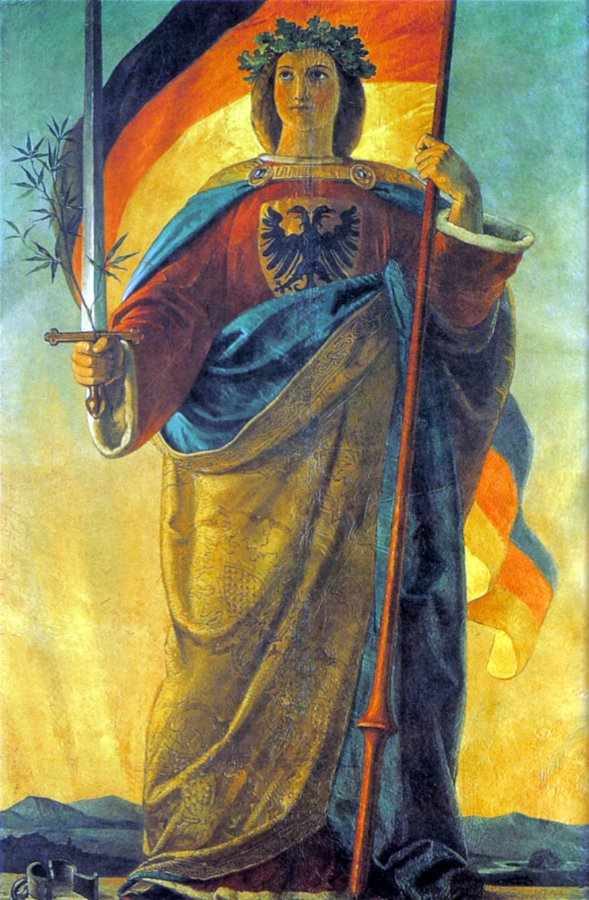Germania is the personification of the German nation or the Germans as a whole. Like many other national personification symbols, she appeared first during the Roman Era. During the Medieval, she was usually portrayed as one of the lands or provinces ruled by the emperors of the Holy Roman Empire, and not as the most prominent but in a subordinate position to imperial power and other provinces. Around 1500, together with the birth of the Holy Roman Empire of the German Nation, Emperor Maximilian I and his humanists reinvented her as Mother of the Nation. She is also commonly associated with the Romantic Era and the Revolutions of 1848, though the figure was later used by Imperial Germany.
| Alias Germania |
| Real Names/Alt Names Germania |
| Characteristics Personification, Classical Antiquity, German |
| Creators/Key Contributors Unknown |
| First Appearance German folklore |
| First Publisher ○ |
| Appearance List Germania (c. 98 CE) by Tacitus – provides the name and conceptual origin; Germania (1813) painting by Philipp Veit; Germania auf der Wacht am Rhein (1840s) – lithographs; Germania of the Frankfurt Parliament (1848) monumental painting by Philipp Veit in St. Paul’s Church, Frankfurt; Germania im Jahr 1848 (1848) – satirical lithographs and broadsheets; Germania, Niederwalddenkmal (1883) monument above Rüdesheim commemorating unification of 1871; Germania (1871–1880s) patriotic lithographs and paintings; Germania postage stamps (1900) |
| Sample Read ○ |
| Description Germania is the personification of the German nation or the Germans as a whole. Like many other national personification symbols, she appeared first during the Roman Era. During the Medieval, she was usually portrayed as one of the lands or provinces ruled by the emperors of the Holy Roman Empire, and not as the most prominent but in a subordinate position to imperial power and other provinces. Around 1500, together with the birth of the Holy Roman Empire of the German Nation, Emperor Maximilian I and his humanists reinvented her as Mother of the Nation. She is also commonly associated with the Romantic Era and the Revolutions of 1848, though the figure was later used by Imperial Germany. |
| Source Germania (personification) – Wikipedia |

